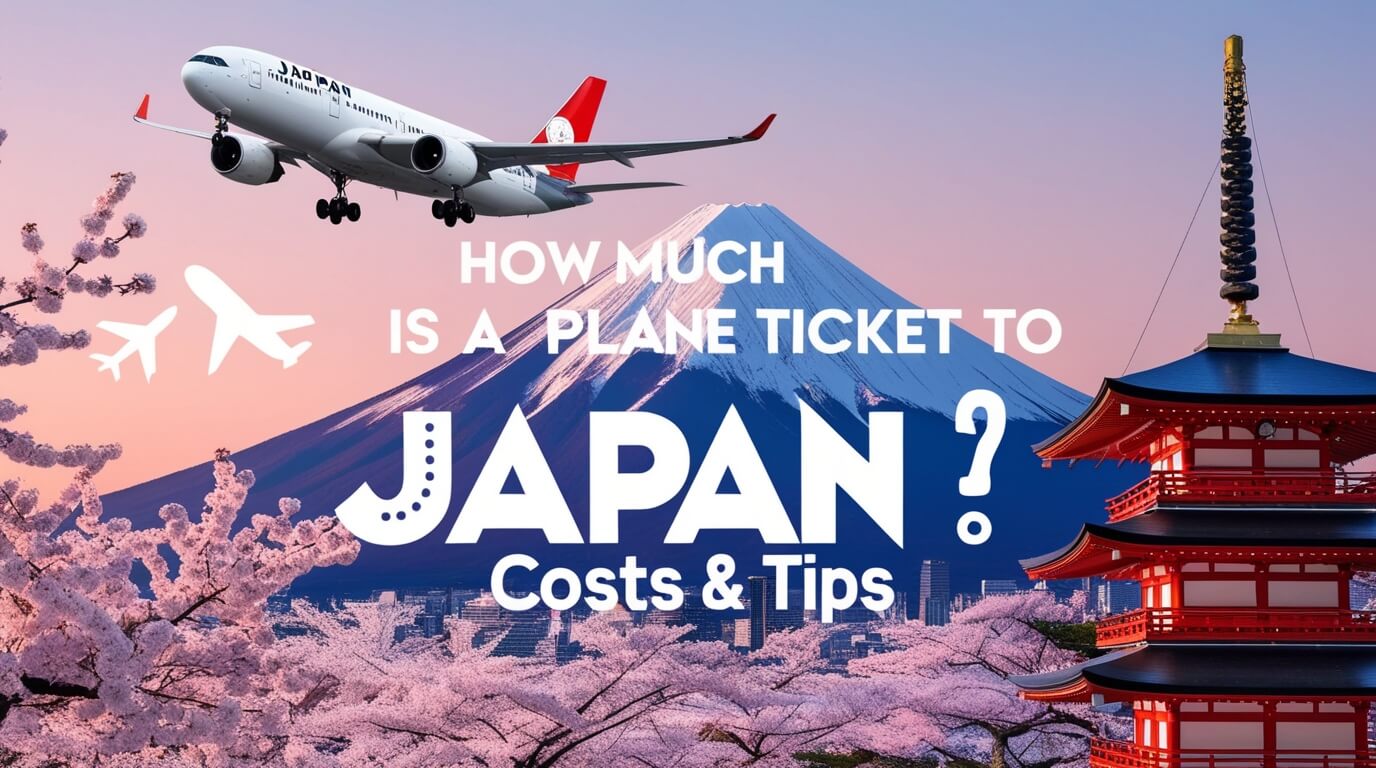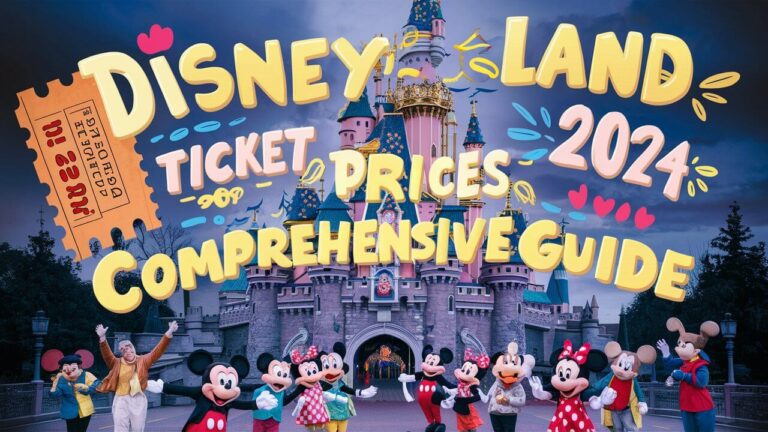How Much is a Plane Ticket to Japan in 2024? Costs & Tips
Planning a trip to Japan in 2024? Whether you’re drawn by the vibrant city life of Tokyo, the historic temples of Kyoto, or the serene landscapes of Hokkaido, one of your first steps will be booking your flight. Understanding how much a plane ticket to Japan will cost you can be tricky, as prices fluctuate based on various factors. This guide will walk you through everything you need to know to budget for your trip effectively.
Factors Influencing the Cost of a Plane Ticket to Japan
When it comes to determining the price of a flight to Japan, several factors play a role. These include the season you’re traveling in, the city you’re departing from, the airline you choose, and how far in advance you book your ticket. Let’s break these down in detail.
Seasonality and Peak Travel Times
Japan is a year-round destination, but certain times of the year are particularly popular among tourists. The cost of flights can significantly increase during these peak seasons:
- Cherry Blossom Season (March to April): This is one of the most sought-after times to visit Japan. The sight of cherry blossoms in full bloom attracts tourists from around the world, driving up airfare prices.
- Golden Week (Late April to Early May): A string of public holidays in Japan during this time makes it a popular period for both local and international travelers.
- Summer (July to August): Summer vacations, festivals, and the Obon holiday period can cause a spike in flight prices.
- Autumn Foliage (October to November): Like cherry blossom season, the fall foliage season is a popular time for tourists to visit Japan, especially in areas like Kyoto.
On the flip side, traveling during the off-peak seasons can save you money:
- Winter (December to February): Except for the holiday season around Christmas and New Year’s, winter is generally a cheaper time to fly, especially in January and February.
- Early Spring (February to March): Before the cherry blossoms bloom, prices tend to be lower.
Departure City
The cost of your ticket will also depend on where you’re flying from. Major cities with large international airports, like Los Angeles, New York, and Chicago, typically offer more competitive prices due to the higher number of flights and airlines serving these routes.
- From Los Angeles (LAX): Flights from LAX to Tokyo can range from $600 to $900 for a roundtrip in economy class, depending on the season and how far in advance you book.
- From New York (JFK): Flights from JFK to Tokyo are generally a bit more expensive, often ranging from $800 to $1,200 for a roundtrip.
- From Chicago (ORD): Chicago’s O’Hare International Airport offers similar pricing to JFK, with roundtrip tickets typically ranging from $700 to $1,100.
Regional airports or smaller cities might have fewer direct flights, which can lead to higher prices due to limited availability and the need for connecting flights.
Airlines and Flight Classes
Not all airlines are created equal, and the carrier you choose can have a significant impact on the cost of your flight. Here’s a look at some of the popular airlines that fly to Japan and how their pricing might vary:
- ZIPAIR: This budget carrier offers some of the cheapest fares to Japan, with prices sometimes as low as $300 for a one-way ticket from Los Angeles to Tokyo. However, the lower price comes with fewer amenities.
- Japan Airlines (JAL) and All Nippon Airways (ANA): These are Japan’s flagship carriers, known for their excellent service. A roundtrip economy ticket typically costs between $800 and $1,200, depending on the season.
- Delta and United: Major U.S. airlines like Delta and United also offer flights to Japan, with pricing similar to JAL and ANA. They often provide additional benefits like frequent flyer miles or premium seating options.
Flight Classes
The class of service you choose will also impact the cost:
- Economy Class: This is the most affordable option, with tickets ranging from $292 to $1,200 depending on the factors mentioned earlier.
- Premium Economy: Offering more legroom and better service than economy, premium economy tickets typically range from $1,000 to $2,000.
- Business Class: For those looking for luxury, business class tickets can cost anywhere from $3,000 to $6,000.
- First Class: The most expensive option, with tickets often exceeding $10,000 for a roundtrip, offering the ultimate in comfort and service.
Booking Time
When you book your flight can be just as important as where and how you fly. Here are some tips to keep in mind:
- Book Early: As a general rule, booking your flight at least three to six months in advance can help you secure a lower fare.
- Last-Minute Deals: While risky, some travelers find great deals by booking last minute, especially if they’re flexible with their travel dates.
- Flexible Dates: If you’re able to adjust your travel dates by a few days, you might find significantly cheaper options.
Special Offers and Discounts
Keep an eye out for promotions, discounts, and special offers from airlines. Signing up for airline newsletters or using fare alert tools can help you catch these deals.
- Frequent Flyer Miles: If you’re a member of a frequent flyer program, you might be able to redeem miles for a discount or even a free flight.
- Credit Card Rewards: Many travel credit cards offer points that can be redeemed for flights or provide travel perks like free checked bags or priority boarding.
Typical Costs for Flights to Japan in 2024
Let’s break down the typical costs you might expect when booking a flight to Japan in 2024, based on the class of service and other variables.
Economy Class
Economy class tickets offer the most affordable way to fly to Japan. Here’s what you can typically expect to pay:
- Low-End Prices: If you’re flexible and book in advance, you might find tickets as low as $292 from the West Coast. These prices are often available through budget carriers like ZIPAIR.
- Mid-Range Prices: Most travelers can expect to pay between $600 and $900 for a roundtrip economy ticket, especially if departing from major cities like Los Angeles or Chicago.
- High-End Prices: During peak travel times, or if booking last minute, economy tickets can climb as high as $1,200 or more.
Premium Economy and Business Class
For those looking for a bit more comfort, premium economy and business class tickets offer a middle ground between economy and first class.
- Premium Economy: Expect to pay between $1,000 and $2,000 for a roundtrip ticket. This class offers extra legroom, better meals, and more amenities than standard economy.
- Business Class: Business class is a significant step up in comfort, with fully reclining seats, premium meals, and priority services. Prices generally range from $3,000 to $6,000, depending on the airline and time of booking.
First Class
First-class tickets to Japan are the epitome of luxury. These tickets offer private suites, gourmet dining, and top-notch service.
- Typical Prices: Prices for first-class tickets usually start around $10,000 for a roundtrip and can go much higher, especially with premium carriers like JAL or ANA.
Cheapest Times and Strategies to Book a Flight to Japan
Timing is crucial when booking your flight to Japan. Here’s how to find the best deals.
Best Months to Travel
Certain months are cheaper to fly than others:
- February: Known as one of the least expensive months to fly to Japan. Post-holiday travel is low, and you can often find excellent deals.
- March and April: If you’re hoping to catch the cherry blossoms, booking early for March or April is essential, as prices rise sharply during this period.
- September to November: Fall is another affordable time to travel, especially if you book for early November before the autumn foliage peak.
Day of the Week
The day of the week you fly can also affect the price:
- Cheapest Days: Tuesdays and Wednesdays are typically the cheapest days to fly. Mondays can also be more affordable than weekends.
- Most Expensive Days: Fridays and Sundays are usually the most expensive, as they coincide with the start and end of the workweek for many travelers.
Booking Tips
A few strategies can help you snag a great deal:
- Set Price Alerts: Use tools like Google Flights or Skyscanner to set alerts for price drops.
- Use Flexible Dates: If your travel dates are flexible, you can use fare comparison tools to find the cheapest days to fly within a given month.
- Book in Advance: Aim to book your flight at least three to six months in advance, especially for peak seasons like cherry blossom or autumn foliage.
Popular Airlines and Routes from the USA to Japan
Several airlines offer flights from the United States to Japan, each with different pricing, routes, and levels of service. Here’s what you need to know:
Non-Stop vs. Connecting Flights
When booking your flight, you’ll have the option between non-stop and connecting flights:
- Non-Stop Flights: Non-stop flights are more convenient, as they take you directly to Japan without any layovers. However, they’re often more expensive. Major cities like Los Angeles, New York, and San Francisco offer non-stop flights to Tokyo.
- Connecting Flights: Connecting flights can be cheaper, but they come with the inconvenience of layovers, which can add several hours to your travel time. For example, a flight from(Continued from above)
…for example, a flight from New York to Tokyo might have a layover in Los Angeles or San Francisco, which could reduce the cost but extend your travel time by several hours.
Top Airlines
Here’s a look at some of the most popular airlines flying from the USA to Japan:
- Japan Airlines (JAL): As one of Japan’s flagship carriers, JAL is renowned for its excellent service, punctuality, and comfortable flights. JAL operates numerous daily flights from major U.S. cities like Los Angeles, New York, and San Francisco to Tokyo’s Narita and Haneda airports. The airline offers various classes, including Economy, Premium Economy, Business, and First Class, catering to different budgets and comfort preferences. JAL is often praised for its attention to detail, high-quality in-flight meals, and courteous service.
- All Nippon Airways (ANA): Another major Japanese airline, ANA is known for its reliability and top-tier service. Like JAL, ANA offers a wide range of flight options from U.S. cities to several destinations in Japan, including Tokyo, Osaka, and Nagoya. ANA’s Business and First Class are particularly well-regarded for their spacious seats, gourmet dining, and excellent amenities, making them a popular choice for travelers willing to pay a premium for comfort.
- Delta Air Lines: Delta offers numerous flights to Japan, with non-stop routes from major U.S. hubs like Los Angeles, Seattle, and Detroit to Tokyo. Delta’s service is generally well-regarded, and the airline offers a range of cabin classes, including Comfort+ and Delta One (Business Class), which provide extra comfort and amenities. Delta’s frequent flyer program and its SkyMiles credit card can also offer substantial savings for regular travelers.
- United Airlines: United is another popular choice for flights to Japan, with direct routes from cities such as San Francisco, Chicago, and Newark to Tokyo and Osaka. United’s Polaris Business Class is especially favored for its lie-flat seats, high-quality bedding, and premium dining options. The airline also offers a range of economy fares, including Basic Economy for budget-conscious travelers.
- ZIPAIR: ZIPAIR is a relatively new, low-cost airline that has quickly gained popularity for its affordable fares. ZIPAIR offers budget-friendly, non-stop flights from Los Angeles to Tokyo, making it an excellent choice for travelers looking to save on airfare. While the airline operates on a no-frills model, it still provides comfortable seating and essential services, with options to purchase additional amenities as needed.
- American Airlines: American Airlines offers several daily flights to Japan, primarily through its hubs in Los Angeles and Dallas-Fort Worth. The airline partners with JAL, which means travelers can benefit from shared flights and better connectivity within Japan. American Airlines’ Flagship First and Business classes offer luxurious seating and top-tier service, while Economy and Premium Economy provide more budget-friendly options.
Hidden Costs and Additional Fees
When budgeting for your flight to Japan, it’s essential to consider potential hidden costs and additional fees that could affect the total price of your ticket.
Baggage Fees
Most airlines include one or two checked bags in the ticket price for international flights, but it’s crucial to confirm this before booking. If you’re flying with a budget carrier like ZIPAIR, you might need to pay extra for checked luggage. Overweight or oversized baggage fees can also add up, so it’s worth packing carefully to avoid these charges.
Seat Selection and Upgrade Fees
Many airlines now charge extra for seat selection, especially for preferred seats with extra legroom or closer proximity to the front of the plane. If you’re looking to upgrade to a better seat, such as Premium Economy or Business Class, this will also come with an additional cost. These fees can vary widely depending on the airline and the route, so it’s a good idea to compare options before making your selection.
Airport Taxes and Surcharges
Airport taxes and surcharges are typically included in the ticket price, but it’s essential to be aware of them as they can add a significant amount to the cost of your flight. These charges are usually non-refundable, even if you cancel your flight, so they should be factored into your overall travel budget.
Comparing Prices for Different Japanese Destinations
While Tokyo is the most popular destination for flights from the U.S., other cities in Japan may offer more affordable options. Here’s a look at how prices can vary depending on your final destination in Japan.
Tokyo (Narita and Haneda Airports)
Tokyo’s Narita and Haneda airports are the main international gateways to Japan. Because of their size and the number of airlines that service these airports, you’re likely to find the most competitive fares here. Prices for flights to Tokyo tend to be lower than to other cities, especially if you’re flying from major U.S. hubs.
Osaka (Kansai International Airport)
Osaka’s Kansai International Airport is another major entry point for international travelers. Flights to Osaka can sometimes be more affordable than flights to Tokyo, especially if you’re flying from the West Coast. Additionally, Kansai’s proximity to popular tourist destinations like Kyoto and Nara makes it a convenient starting point for your trip.
Other Destinations
If your final destination is somewhere other than Tokyo or Osaka, such as Kyoto, Fukuoka, or Sapporo, you may need to book a connecting flight from one of the major airports. While this can add to the cost of your ticket, it might still be cheaper than flying directly to a smaller airport. It’s also worth checking flights to Nagoya or Hiroshima, which sometimes offer lower fares and are well-connected to the rest of Japan by the country’s excellent rail network.
Conclusion
Booking a flight to Japan in 2024 can be a significant expense, but with careful planning and a bit of flexibility, you can find a ticket that fits your budget. Whether you’re traveling during peak cherry blossom season or looking for a bargain in the winter months, understanding the factors that influence flight prices can help you make informed decisions.
To get the best deal, consider booking your flight several months in advance, being flexible with your travel dates, and using tools like price alerts and fare comparison websites. And don’t forget to factor in additional costs like baggage fees and seat selection charges when budgeting for your trip.
Ultimately, how much you’ll pay for a plane ticket to Japan in 2024 depends on a variety of factors, but with the right strategy, you can find an option that works for you. Safe travels!







